This Is How Mastering Dark Matter Could Take Us To The Stars

It’s found everywhere we know how to look, and just might be nature’s perfect fuel. Here’s how to harness it.
Dark matter is one of the biggest mysteries in all of modern science. Everywhere we look on large cosmic scales — from low-mass galaxies to the largest galaxy clusters, from the cosmic microwave background to the cosmic web that traces the Universe’s structure — we can see the imprints and effects of its presence. For every proton’s mass worth of normal matter, there’s five times as much dark matter, out-massing and out-gravitating the conventional stuff that makes up everything we’ve ever directly detected.
Even though we have yet to directly detect it, and even though we aren’t sure exactly what its true properties are, dark matter holds a tremendous promise for the future of humanity. Ubiquitously located all throughout the galaxy and far beyond, dark matter could be the perfect fuel that makes our interstellar dreams come true. Here’s the story of how.
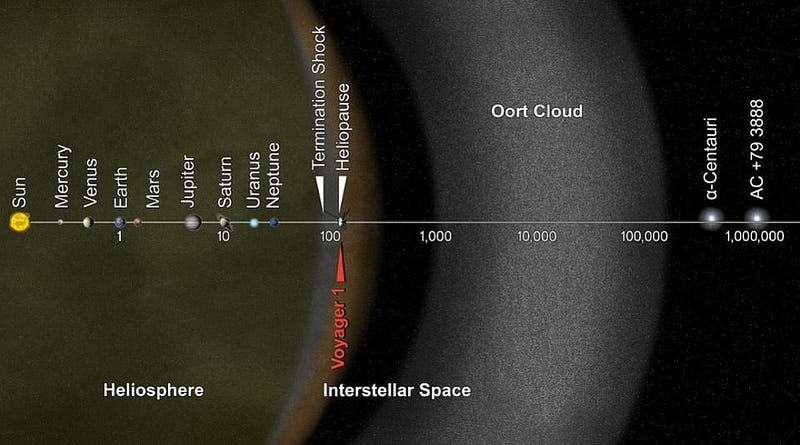
Whenever humanity sets our sights on exploring the depths of space, there are constraints we can’t avoid: the laws of physics. In order to accelerate a spacecraft — or any mass — you have to impart an impulse to it in order to change its momentum. The larger the impulse, the more you can change an object’s speed. All that determines the magnitude of an impulse is how much force you apply and how long you apply it for.
In a conventional rocket, that impulse is provided by rocket fuel that undergoes a combustion reaction, which produces impulse in the form of thrust. Although this is the best method humanity has come up with for space travel so far, it’s incredibly limiting. All of our past and current rockets are chemical-based, unfortunately, and that places tremendous constraints on how far we’ve been able to go.
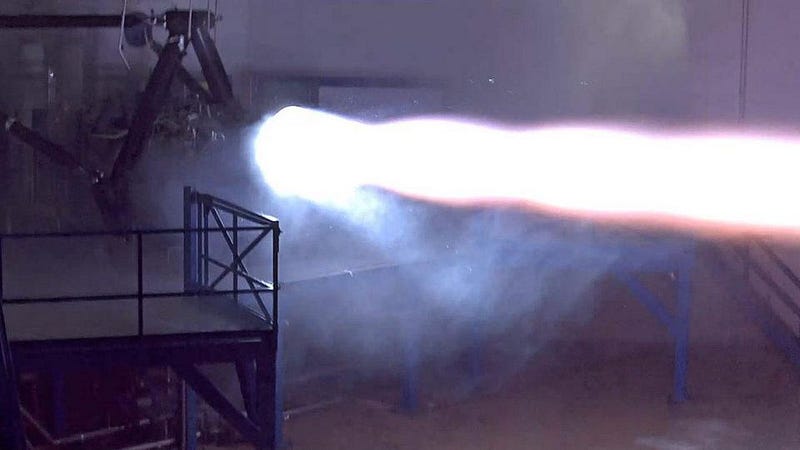
The reason for this is simple: in order to produce thrust — i.e., in order to impart an impulse to your spacecraft — you have to convert that stored chemical energy in the fuel into kinetic energy that pushes your spacecraft. In order to generate that energy, however, you have to use up some of that fuel you’re carrying with you.
The key to getting lots of thrust, and therefore lots of acceleration, is fuel efficiency. Certain types of fuel are more energy-efficient than others, meaning that we can get more energy (and thrust, and acceleration) out of, say, 1 kilogram of some types of fuel. An easy way to think about this is through Einstein’s most famous equation: E = mc². If you had a perfect, ideal fuel, it would convert 100% of your fuel’s mass into energy, enabling you to make the most efficient fuel imaginable.
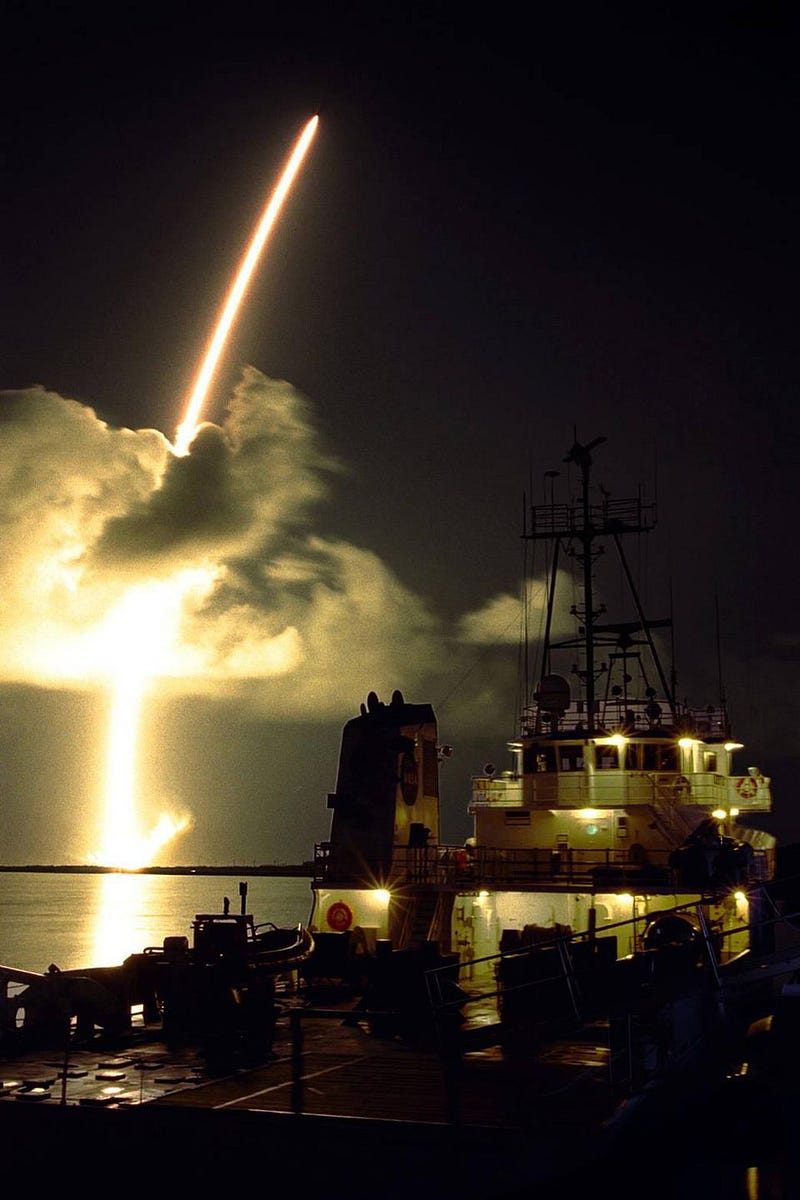
At most, though, chemical-based reactions are somewhere around 0.0001% efficient. The reason is as follows: chemical reactions rely on electron transitions between atoms and molecules. Most of an atom’s mass is in the form of protons and neutrons, each of which have a mass that contains around 10⁹ eV worth of energy. Electron transitions, however, are on the order of a few (typically 1–10) eV of energy. Even with all the chemical-based tricks we can perform, there are no known reactions that allow us to improve on this.
Sure, we can go for some type of nuclear fuel, but that’s only marginally better, achieving efficiencies of around 0.1%. It’s a huge improvement, if we can realize it, but there’s still a fundamental problem with accelerating to speeds that will carry you interstellar distances on reasonable timescales.

The key problem is as follows: whenever you burn fuel, you have to accelerate the entire mass of your spacecraft, including any fuel that’s still on board.
Read that again: including any fuel that’s still on board.
In other words, let’s imagine you can shoot exhaust out of your vehicle at an incredible rate: 100,000 mph (about 160,000 kph), relative to the rocket itself. If you start off with a rocket where 99% of your initial mass is fuel, and you assume that your fuel is perfectly 100% efficient (as though it were pure matter-antimatter annihilation), you’d wind up with a final speed of 460,000 mph (740,000 kph). Even at this record-setting rate, it would still take thousands of years to reach the nearest star.

On the other hand, there’s another approach to interstellar travel that could — in principle — make our science-fiction dreams come true. Instead of bringing your fuel with you, what if you collected it as you went? Typically, ideas like this involve enormous magnetic fields that funnel charged particles into some sort of “trap” in your spaceship, allowing you to put nuclei and electrons together where you can then extract energy and perform further reactions with them.
But dark matter offers a tremendous advantage over normal matter in this regard. Why? Because you don’t have to do anything special to collect it. It’s literally everywhere, distributed in an enormous halo surrounding and encompassing every large galaxy we know of, including the Milky Way. If we find ourselves anywhere in the galaxy, there’s bound to be dark matter lying around.
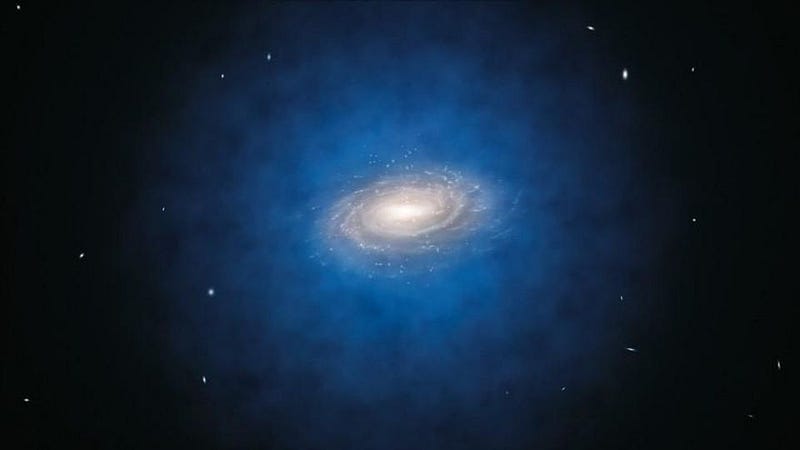
The second tremendous advantage comes from the progression away from chemical-based rockets and towards the idea of a perfect fuel. For chemical-based rockets, 0.0001% energy efficiency is the best we can hope for. For nuclear-based rockets, fission power might get us up to 0.1% efficiency, and nuclear fusion might get us a little further: perhaps up to 0.7%.
The ideal configuration would be to use matter-antimatter annihilation, which is 100% energy efficient. The downside of matter-antimatter annihilation comes with a terrible cost, though: it takes a tremendous amount of work, energy, and effort to create an extraordinarily small amount of antimatter. If you took all the particle physics laboratories ever constructed on Earth and added up all the antimatter humanity has ever created, from Fermilab to CERN, you’d wind up with less than a microgram of antimatter.
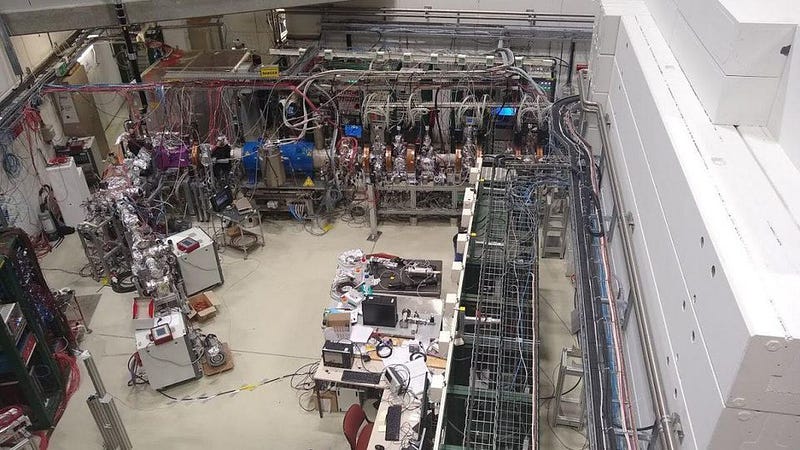
Sure, E = mc² might be the most efficient way to extract energy from mass in the entire Universe, as it represents perfect efficiency. But even if you manage to contain and store your antimatter successfully and annihilate it only at the proper moment, you’ll still have a finite supply of fuel that required an incredible amount of energy to collect. Once you use up this perfect fuel, you’re all out, and all you can do is travel at a constant velocity through space for an indefinite duration of time. Even if we could generate an arbitrary amount, we’d still be fundamentally limited with an antimatter rocket.
That’s why the promise of a dark matter fuel source is so alluring. Not only might dark matter be an unlimited fuel source (in terms of abundance) that we don’t have to carry on board with us, but it might have that perfect, 100% efficient matter-to-energy conversion potential we so strongly desire.

There are a multitude of experiments looking for the collisions of dark matter with both normal matter and itself. In general, there are two types of particles in the Universe: fermions (with half-integer spins) and bosons (with integer spins). If dark matter is a bosonic particle with no electric, color, or weak charge, that would mean it behaves as its own antiparticle.
If you can collect two dark matter particles and make them interact with one another, there’s a finite probability that they’ll annihilate. When an annihilation occurs, they’ll produce pure energy in a 100% efficient fashion: via Einstein’s E = mc². In other words, if we understand dark matter correctly, there’s a free, unlimited source of energy everywhere humanity dreams of going.
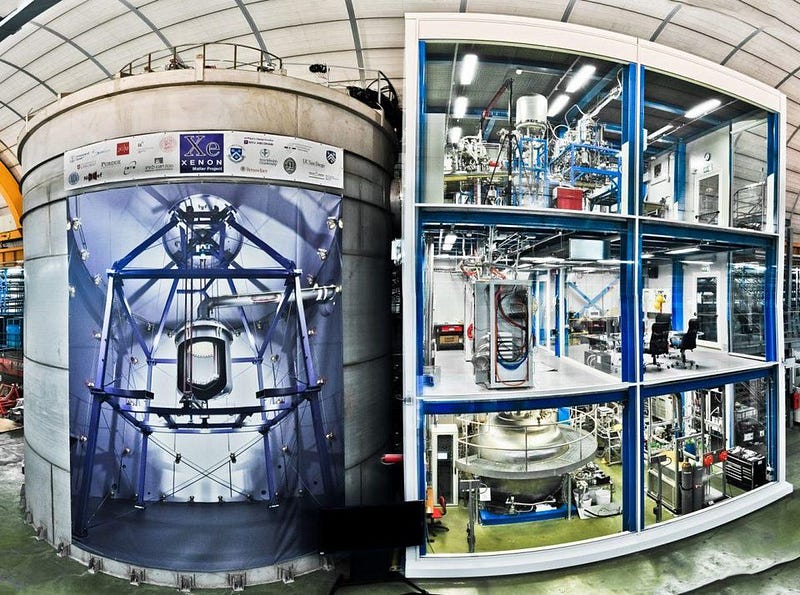
Because dark matter is everywhere, we wouldn’t even need to carry it with us as we traversed the Universe. As far as we understand it — and admittedly, we need to understand it a lot farther — dark matter could truly deliver our dream of the ultimate fuel. It’s abundant all throughout our galaxy and beyond; it should have a non-zero annihilation cross-section with itself; and when it does annihilate, it should produce energy with 100% efficiency.
Perhaps, then, most of us have been thinking about experiments seeking to directly detect dark matter all wrong. Yes, we want to know what makes up the Universe, and what the physical properties of its various abundant components truly are. But there’s a science-fiction dream that could come true if nature is kind to us: unlimited, free energy just waiting there for us to harness, no matter where in the galaxy we go.
Mastering dark matter is the endeavor that just might make it so.
Ethan Siegel is the author of Beyond the Galaxy and Treknology. You can pre-order his third book, currently in development: the Encyclopaedia Cosmologica.





